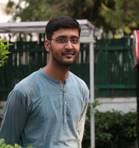
The year was 1942. Monsoon winds from the Indian Ocean had already arrived. With them the news of vigorous naval battles also came. World had become bipolar, India too was on the boil, waiting to unshackle the chains of age old slavery. At this juncture Sir Stafford Cripps came with an offer of dominion status in return of India’s support for the war. The British offered allegiance to Queen in lieu of self-rule but did not realize the likes of Bhagat Singh & Chandra Shekhar Azad hadn’t sacrificed their lives for dominion status. Demand of freedom fighters across the country was unanimous and it was for ‘Poorna Swaraj‘, total independence. Therefore, on the eve of 8th August, 1942 Gandhi ji gave a clarion call to the nation. He said, “Here is a mantra, a short one that I give you. You may imprint it on your hearts and let every breath of yours give expression to it. The mantra is: ‘Karo ya Maro’, ‘Do or Die’.”
Quit India Movement was launched at a time when the world was in a flux. There was an ongoing war in the West and in the East, movements against the Colonialism had intensified. India on one hand was looking at the leadership of Mahatma Gandhi who wanted to transform the society by non-violent means and Satyagraha. On the other hand was the ‘Tiger of Bengal’, Subhash Chandra Bose who had given the slogan ‘Dilli Chalo’ and was marching with an Army to free India. The breeding ground of India’s independence movement had had enough manure of mass movements and was fertile now to plant seeds of freedom.
All big leaders were arrested within twenty four hours after the movement was announced, there was no one to guide, but still the movement propped up leaders from across the strata of society. Large protests and demonstrations were held all over the country. People demonstrated against symbols of British government, they put up Congress flag on government buildings. People offered arrests and disrupted day to day workings, students and workers went on strike, peasants in Bengal fought against the rise in taxes and government officials broke laws. It was a historic event. It was not merely a movement against foreign occupation but also awakening of Indian masses. The history of this movement is full of unsung heroes. There are untold stories of farmers, factory workers, journalists, artists, students, educationists, religious saints and dalits.
The movement saw rise of leaders like, Dr. Ram Manohar Lohia, Jai Prakash Narayan and Aruna Asaf Ali. Parallel governments were formed in many parts of the country. Chittu Pandey formed a government in Balia while YB Chavan and Nana Patil in Satara. Quit India movement was unique in the sense that it saw women participation where they not only participated as equals but also led the movement. There was Matangini Hazra, who lead a procession of 6,000 people, mostly women, to ransack a local police station. She lost her life to police bullets and died with the Tricolour in her hands. Then there was Sucheta Kripalani who later went on to become first women Chief Minister of India. Orissa had Nandini Devi and Sashibala Devi while Assam saw participation of young girls like Kanaklata Baruah and Kahuli Devi who died of police atrocities. Contribution of Usha Mehta was unique as she started a Secret Congress Radio in Mumbai.
In the city of Patna there is a life-size sculpture of young school going boys clad in dhoti kurta and a Gandhi cap. These men face the gate of the Old Patna Secretariat and the one in front holds a flag while the others behind are falling or already fallen down. The sculpture tells the story of seven young martyrs who are killed in cold blood while peacefully trying to hoist Congress flag at the Patna Secretariat. These young men personify the spirit of the Quit India Movement. Indian democracy owes its vibrancy and diversity to such sacrifices.
Quit India Movement was a watershed movement in the sense, that it prepared the ground for future politics in India. Gandhi ji in his historic speech at Gowalia Tank Maidan had said, ‘Thepower, when it comes, will belong to the people of India, and it will be for them to decide to whom it is placed….’. It is in the Quit India Movement that freedom struggle was owned by ‘We the People’ who fought for India’s freedom.
Prime Minister Narendra Modi in his latest Mann Ki Baat, exhorted the youth of the nation to build a campaign ‘Sankalp se Siddhi’. It is essentially a resolve to Quit India of the ills like poverty, corruption, terrorism, casteism and communalism. He said in the five years from 1942 to 1947, entire nation united to fight against the British. Similarly, 15th August, 2017 should be our Day of Resolve to free India of all these problems by 2022. This call of his is in resonance with his earlier call to build a ‘New India’ – an India of new desires and dreams, an India that treats its poor equally, an India that fulfils the aspirations of Nari Shakti, an India that has deep bond between its people and democracy and an India that is rid of corruption and black money. Prime Minister Narendra Modi has often said that he was born post-independence and did not have the chance to fight for its freedom. Similar is true for most youth of the country. 75 years of Quit India Movement will be a chance for all of us who ‘could not die for our country’, to ‘live for it’ and make our freedom fighters dreams come true.
About: Shri Aaditya Tiwari is currently a Senior Research Fellow at India Foundation. He is a poet too.Views expressed in the article are author’s personal.



Leave a Reply
You must be logged in to post a comment.